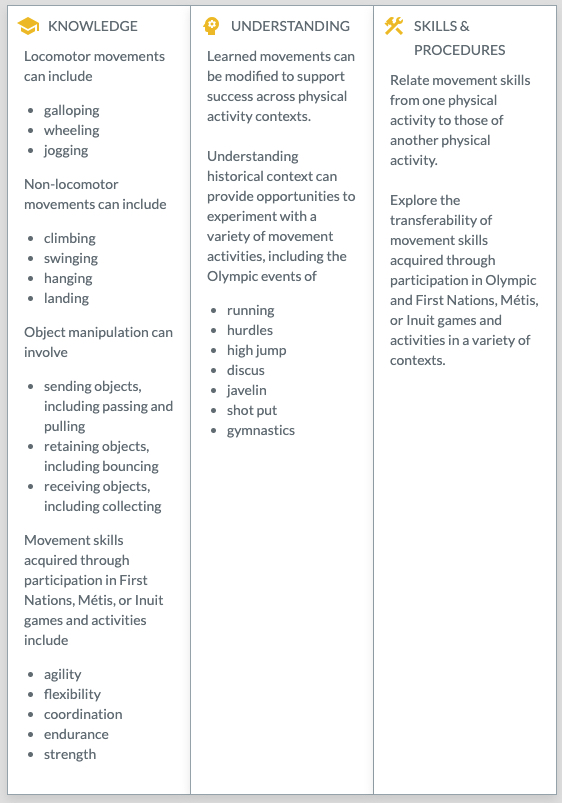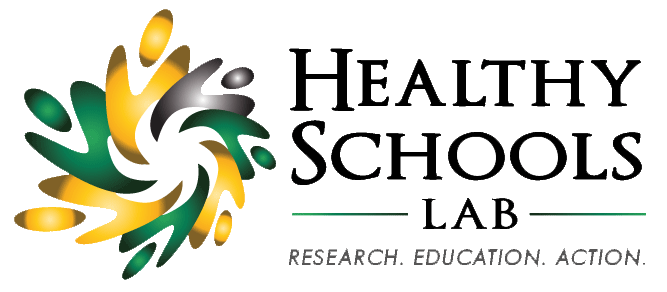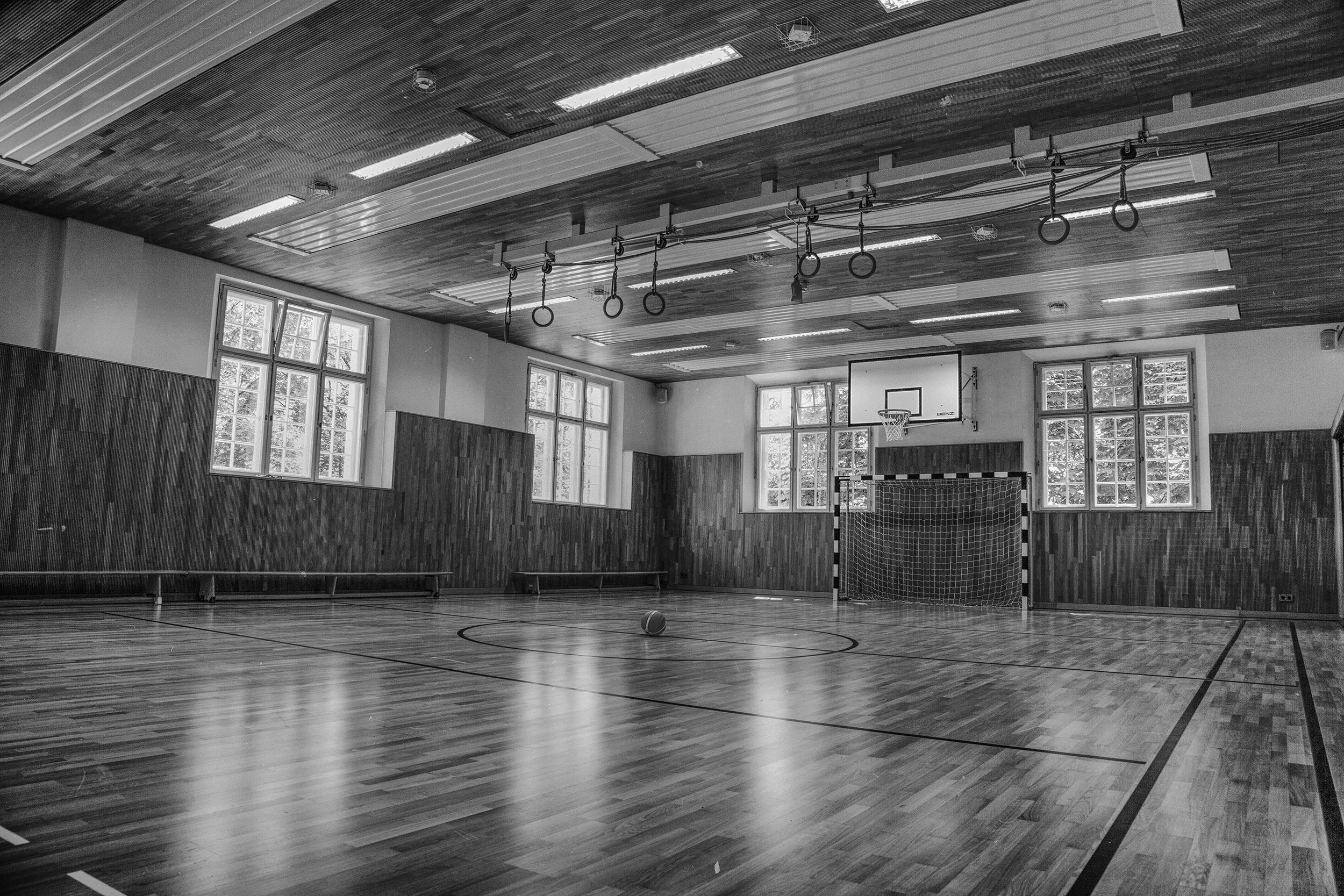Review: Alberta Education’s Draft K-6 Physical Education and Wellness Curriculum
It’s now been a week since World Health day and over here at the Healthy Schools Lab we’ve been spending some time (appropriately) diving into Alberta Education’s Draft K-6 Physical Education and Wellness curriculum. There has been a fair bit of press on the new draft, but other than a few comments about consent, there has not been much on the PE and Wellness front (let’s just state right off that having a curriculum acronym of PEW is not a great start…).
Before we share our initial reactions to the draft, perhaps it would be helpful to provide our collective background and experience in physical and health education.
- Our vision here at the lab is: Through research, education and action, the Healthy Schools Lab will heighten awareness and understanding of issues and opportunities surrounding health and wellness in the K to PhD education system and contribute to the collective development of a healthy, active society. This new draft certainly qualifies as an issue and opportunity – not to mention having an impact on healthy, active living.
- Between us, we have over 18 years of teaching experience in K-12 education, 20 years of teaching and researching physical and health education in university, 40+ peer-reviewed articles, a textbook, hundreds of presentations across Canada and Internationally, and we have worked with physical and health education curriculum documents from almost every province and a number of countries (e.g. Australia, Scotland, New Zealand). Oh, and we’re cool people. ; – )
- Lauren (2016 to 2019) and Doug (2016 to 2018) were on the initial curriculum working group established by the NDP government (and Doug was involved in the long running PE curriculum review that began in 2007 and moved through a number of iterations…). Although we had concerns about the direction of the curriculum from 2016 onward, at least the consultation process was robust, transparent and comprehensive (more on that later).
One more little bit before we get to our review. We feel very strongly that getting the physical and health education curriculum ‘right’ is extremely important. Why?
#1 – We know that the content in our physical and health education programs can be critical to helping students (parents, Albertans, etc.) to BE healthy. For example, in Canada, an estimated 14%-25% of children and youth suffer from significant mental health issues (School-Based Mental Health in Canada: A Final Report).
- Health education is the only subject that includes outcomes targeted at positive mental health; teaching students about stigma, strategies to support positive mental health and resources and supports to cope with mental health issues.
- Physical education is the only subject that provides students with opportunities to be physically active which is a critical component of holistic health – “Arguably, physical education class is one of the best contexts to develop social and emotional competencies” (Ciotto & Magnon, 2018).
#2 – Education can not be considered “whole-child” unless it includes education of the physical. “…physical education is important because movement is joyful, pleasurable, provides intrinsic satisfaction, and can be personally meaningful and central to the human experience” (Blankenship & Ayers, 2010).
#3 – As we’ve written before, the joy and meaningfulness that can be found through physical and health education are inherently valuable in and of themselves. When the driving force is creating meaning, guess what? Health and academic benefits also come along for the ride.
Whoops. One LAST little bit before the review (promise!). We purposefully restrained ourselves in this post to stick to a high level overview of a few key aspects. 1) Issues with the structure and usability. 2) The fact that we feel that aspects/ omissions in this curriculum actually move us backwards. 3) The lack of transparency. That being said, there are some positive aspects to the draft. It explicitly includes activities that are land-based. A new focus on risk and adventure is consistent with research evidence and the draft highlights the importance of social and emotional competencies. Our plan is to follow up over the next months with more detailed reviews of the draft, but for now – our initial thoughts…
FIRST.
The current structural framing or architecture and design that is indicated in the Guiding Framework document, is said to provide a “systematic and logical arrangement…” (p. 22). Unfortunately, the presentation of extremely long knowledge sections, a lack of grade level comparisons to comprehend scope and sequence and the limited information on what the organizing ideas actually are (combined with the non-existing connections across organizing ideas), are a few illustrations of the many challenges for usability, implementation, and understanding.
Let’s dive into format for a moment. It is essential to the usability of a curriculum to be able to understand the big ideas that drive ‘knowledge, understanding, and skills & procedures’. However, we are not provided with critical front matter content to help decipher the grounding components of the curriculum (and subject area). It becomes a massive challenge to scroll through copious amounts of information to see how guiding questions (GQs) and learning outcomes (LOs) progress through K-6. In a word – it’s inaccessible. The format should allow readers to see connections and an integration of concepts across organizing ideas (including those GQs and LOs) to allow for teachers to use their expertise for pedagogical implementation.
Additionally, two previously separate curriculum areas (physical education and health education) have been combined in this recent draft. Little has been shared about how they are being connected and are expected to align. We do believe that bringing these curriculum areas together can be an asset and a powerful way to teach core competencies (that are a feature of the draft curriculum) and the key themes being promoted with this draft. However, the following are not apparent in the current format and disseminated information:
- How are the physical education and wellness components aligned and allocated for implementation?
- Are we teaching through physical activity and movement as per the previous PE curriculum?
- Can we assume that each organizing idea (7 of them) is taught 14-15% of the year?
A breakdown of LOs to emphasize the necessity of MOVEMENT alongside wellness related outcomes is needed to paint a clearer and larger picture of what this curriculum is all about. The format does not allow for clear integration of concepts as it could (i.e., character development through active living; safety alongside movement skill development; healthy eating connections to safety; healthy relationships impact on character development…). Overall, the picture is not clear.
Speaking of clarity… We feel that clarity and connections between the outcomes are lacking. The snapshot of the draft curriculum is not truly representative of the content found in the larger draft. It is misleading and needs revision to reflect what’s truly in the content. Furthermore, the overall draft needs to clearly consider teaching the whole-child (including the cognitive, affective, physical, and spiritual being). We see a lack of whole-child focus which is necessary to ensure learning environments support holistic child development. We need to care for children’s physical selves alongside the other domains and the lack of movement-based outcomes/clarity around them is a concern. Although we are pleased to see some concepts added into this draft that were lacking in the previous curriculum, as noted in the introduction, aspects are still very unclear, unconnected and missing.
Examples:
- The organizing ideas of active living and movement skill development state: Active Living: “A healthy way of life includes regular practice of meaningful active living” and then, Movement Skill Development: “A healthy way of life includes regular practice of movement”… A little clarity please.
- Character development: “Exploration of life opportunities and virtues develops resiliency and personal talents and promotes lifelong learning.” Let’s stop pushing buzz words. From our review, character development actually encompasses a wider-range of concepts that need to be clearly articulated. Some include emotions/expression, personal characteristics/roles, self-regulation/resilience, volunteerism, perseverance, life experience, etc. Clear descriptions of the organizing ideas are essential.
- In Grade 2: Movement Skill Development; LO: “Students demonstrate how movement can be modified to improve control and efficiency.” It goes on to say that Grade 2’s are going to participate in javelin, high jump, discus… clarity is needed between the knowledge> understanding> skills & procedures sections to ensure developmentally appropriate implementation is achieved. We’re not giving Grade 2’s javelins folks.

SECOND.
We would argue that the draft K-6 curriculum does not align with current educational research in the field of physical and health education. The current K-12 Physical Education curriculum (2000) and the K-9 Health and Life Skills curriculum (2001) were quite strong (internationally recognized) and are still relevant, innovative and evidence-informed. As we engaged in our review of the new draft curriculum, we noted a shift away from current research towards learning outcomes that actually move us backwards within our field. Here are a sample of the areas we feel missed the mark and need revision to align with current research:
- The Absence of Physical and Health Literacy. Literacy is listed as one of the four key learning themes that span all grades within the draft K-6 curriculum. To our surprise and dissent, physical and health literacy are not mentioned within the draft. Physical and health literacy are at the forefront of present research within the field of physical and health education and positively impact experiences and participation in health-related behaviors. Physical Literacy focuses on the motivation, confidence, physical competence, knowledge and understanding to value and take responsibility for engagement in physical activities for life. Health Literacy refers to the degree to which an individual has the capacity to obtain, communicate, process, and understand basic health information to make appropriate health decisions – ALL skills which are essential for healthy citizens now and in the future. The understanding of literacy presented in the draft curriculum is narrow-minded and regressive. Literacy is no longer limited to ‘reading and writing.’ Physical and health literacy are just as important as ‘traditional’ literacy and should be the foundation of the curriculum.
- Focus on Fitness vs. Active Healthy Lifestyles.The word fitness appears in the draft 7 times within the (limited) learning outcomes focused on physical activity in grades 3 to 6. For example, in grade 4 students are “selecting a variety of physical activities to align with physical fitness goals.” Why are we having 9-year-olds make FITNESS goals? We strongly argue that fitness should not be the main focus for 8 to 12-year olds. Coming back to our previous points on physical literacy and meaningfulness, learning should center on the knowledge, skills, and understanding that are needed to engage in a lifestyle that incorporates physical activity and healthy choices. Research has pointed us away from a fitness focused physical education program. That is not to say that fitness is not important, however, with this age of children, the focus should be on instilling a joy for movement in a variety of contexts that build physical competence (where fitness comes along for the ride!) and a sense of the value found in physical activity.
- Positive Mental Health. A progressive area of the draft curriculum includes the focus on social emotional competencies. The inclusion of competencies such as self-regulation, managing emotions, building resiliency, and healthy relationships align with our current understanding of the skills students need to build positive mental health – GREAT! However, social and emotional competencies are not the only aspect to good mental health. We would have expected the inclusion of mental health literacy – yes, another literacy – and its associated components. Mental Health Literacy consists of four interrelated components: (a) understanding how to obtain and maintain good mental health, (b) understanding mental disorders and their treatments, (c) decreasing stigma related to mental health concerns, and (d) knowing when and where to seek help. How can we expect students to learn to advocate, value, and take responsibility for their own mental health with topics like stigma, recognition of mental health problems, mental health care and self-management glaringly omitted? In addition, there is little mention (one learning outcome in grade 1) of the interconnections between the dimensions of wellness, for example, physical activity is good for mental health! Perhaps the recognition of the interconnections between mental health and physical activity (and other dimensions) across all grade levels would have resulted in more learning outcomes focused on movement.
- Healthy Relationship with Food. Reading food labels, measuring food, and identifying ‘bad’ foods are contradictory to contemporary research on the promotion of healthy eating. Learning outcomes in grade 4 include analyzing food labels and food portion sizes; while grade 6 focuses on one’s ability to make healthy food choices, cost of healthy foods, and food access. The undercurrent of these outcomes suggests placing judgment on foods, obsessing about food labels, economic inequity, and the misunderstanding that elementary students are in control of what they eat. Where are the outcomes focused on healthy body image, health for all, and respect and appreciation for all that the body can do (play, jump, climb a tree)? We would argue that teaching young children to over-analyze and place judgment on what they eat will promote an unhealthy relationship with food and their bodies.
- A Comprehensive Approach to Health. The health of Alberta students should not be the sole responsibility of physical and health educators. While physical and health education curricula can be viewed as a foundational piece of student wellbeing (and IS!), all Alberta teachers need to be engaged in the promotion of student health. We know that health and education are inextricably linked. Comprehensive School Health is an internationally recognized and extensively researched approach to supporting improvements in students’ wellbeing through whole-school strategies (school policy, social and physical environment, teaching and learning, partnership and services). Within the program rationale and philosophy of our current K-9 Health and Life Skills curriculum, Comprehensive School Health is noted as a ‘desirable approach to student health’ – because it is! Physical and Health Education Canada, the Pan-Canadian Joint Consortium for School Health, Alberta Health Services, and Ever Active Schools have all identified Comprehensive School Health as an effective approach to addressing the health needs of our students. This omission in the draft curriculum contradicts current research and moves us back to single-pronged approaches to student health (i.e., curricula), which we know are less effective.
THIRD.
The consultation process that Alberta Education followed for the draft curriculum leaves us with a lot of questions. First off, we’d like to know how the members of the ‘Independent Curriculum Advisory Panel’ were appointed. From our perspective, it would have been important to have a minimum of one member with expertise in the area of healthy schools and health related curriculum. In Canada, we have no shortage of highly qualified, experienced people who could have filled this role.
Similarly, we wonder what the process was to vet and select ‘advisors with subject area expertise’. Despite asking the question, we have no idea how these advisors were chosen. Was there a ‘call’? Some form of process to determine the best advisors such as: Practical experiences in schools? Expertise and experiences at the K-6 developmental levels? Demonstrated and relevant research expertise in health and physical education? Prior curriculum development experience?
Some transparency and accountability would go a long way here. Again, Alberta (and Canada, if the choice was to bring in outside expertise), is blessed with a wealth of organizations and people with expertise and experience in these areas. Where was the consultation with the Health and Physical Education Council, Ever Active Schools and Physical and Health Education Canada – all highly regarded organizations with a rich history of supporting curriculum development? We also are members of a group of post-secondary educators from across Alberta who all teach physical and health education (the super easy acronym of ATEPHE – Alberta Teacher Educators of Physical and Health Education) and certainly would have found the time to help if asked (and still would!).
LOOKING FORWARD
We are trying to remain positive that the government is open to revision and meaningful changes to the draft curriculum – for the benefit of students in Alberta – the future of our province. We are not just concerned with the structure/usability, the omissions and lack of evidence-based content, and the consultation process (or lack thereof). As stated earlier, we will continue to read and provide critique in the months ahead. However, we are also looking down the road to 2022 and wonder if teachers will receive the appropriate professional development they will need to implement a new curriculum?
A curriculum that will be revised to support the development of the whole-child.
A curriculum that will be organized for usability and accessibility.
A curriculum that will be based in evidence and move our province forward, not backward.
A curriculum that will be informed by those stakeholders who have so much to offer.
A curriculum that is not pathogenic, but salutogenic.
In the meantime, let us know what you think, provide Alberta Education with your feedback, write your MLA and stay tuned.
The Healthy Schools LAB.


